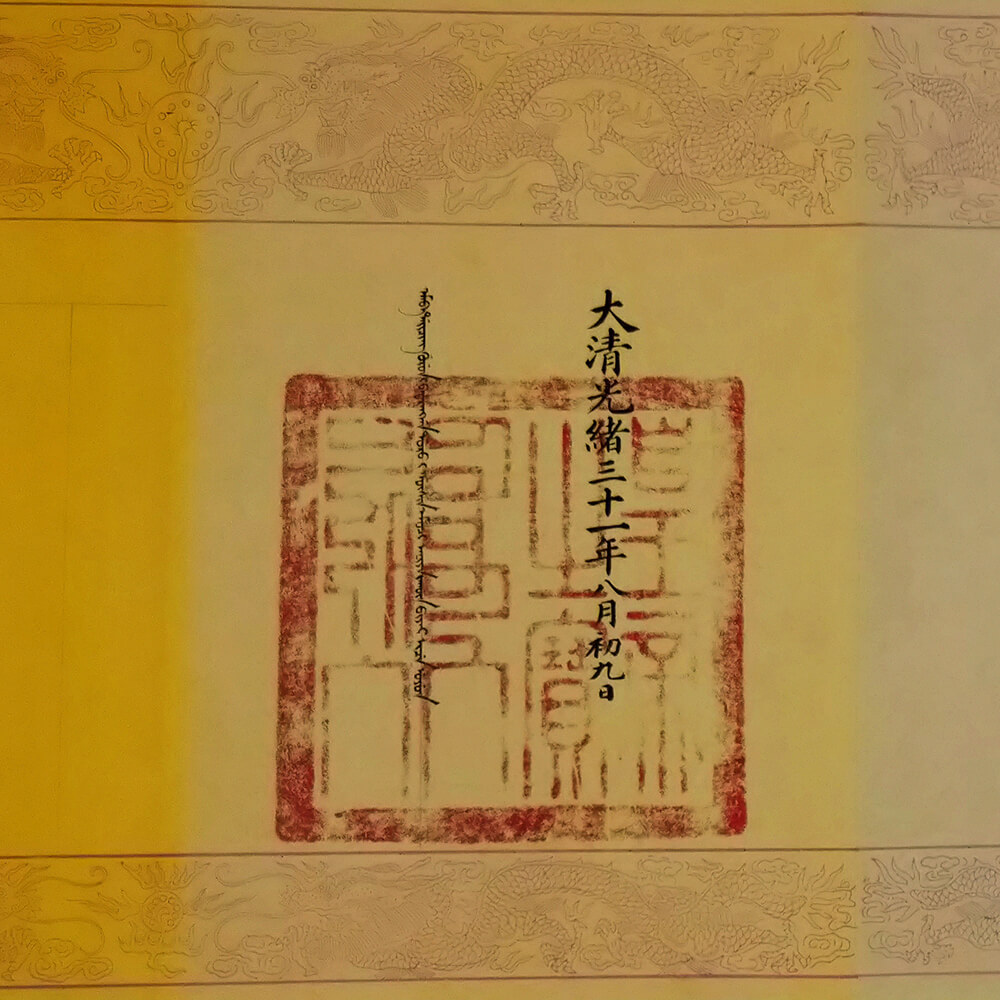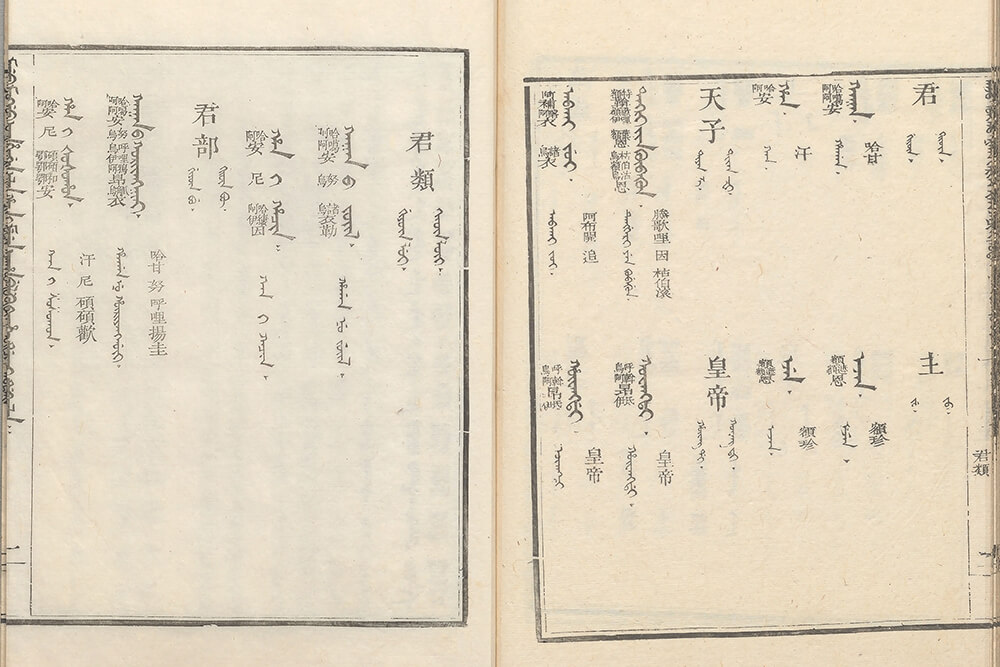The Ruler's Multiple Identities
The Chengde Summer Resort was an important venue where Qing emperors handled ethnic affairs. The Manchu rulers assumed different identities in relation to the different ethnic groups under their governance, sometimes calling themselves "emperor" (hūwangdi) or "Son of Heaven" (abkai jui), other times referring to themselves as "prince" or "khan" (han). Meanwhile, as the head of the Eight Banners (Baqi), the Qing emperor was referred to as ejen by Manchu officials in court memorials. In addition to these monikers, they were also known as "the Emperor Manjusri" (jam yang gongma), a courtesy title used in letters from the Tibetan clergy since the time of Shunzi, the first Qing emperor to rule over China proper. The Qianlong Emperor (r. 1736-1795) even saw himself as the manifestation of Manjusri, and a series of portraits depicting him as the Bodhisattva of Wisdom further strengthened the image he desired to project.
Emperors and Han
In the Qing Dynasty, most official books and seals containing both Manchu alphabets and Chinese characters translated the word "emperor" as "han." "Han" was an honorary title used by the public to refer to Manchurian rulers and one used by the rulers to refer to themselves. Although the Qingwenjian contains the Manchu alphabet "hūwangdi," the alphabet is clearly a direct transliteration of the Chinese word "emperor." This suggests that the word "emperor" did not exist in Manchu, and that the Manchus who ruled China borrowed the term from the Chinese to mean han and signify the emperor of China.
Diplomatic Credentials from the Great Qing to France
- 31st year of the Guangxu reign(1905), Qing Dynasty
The "Diplomatic Credentials from the Great Qing to France" is stamped with the Chinese characters "emperor's treasure." Manchurian seal, made using jade and written in seal script, translates the Chinese word "emperor" as "han" (
 ), as observed in "han i boobai."
), as observed in "han i boobai."Entry for jun (emperor)
- From fascicle 4 of Manzhumengguhanzi Sanhe Qieyin Qingwenjian (Manchu, Mongolian, and Chinese Triglot Phonetic Dictionary)
- Written by A Gui, et al., on imperial order
- Imprint by the Imperial Printing Office at Wuyingdian Hall, 57th year of the Qianlong reign (1792), Qing dynasty
In the "Entry for Jun" in Qingwenjian, words such as "the son of heaven, " "emperor," "monarch" and "master" (which are "abkai jui"(ᠠᠪᡴᠠᡳ ᠵᡠᡳ), "hūwangdi"(ᡥᡡᠸᠠᠩᡩᡳ), "han"(ᡥᠠᠨ), and "ejen"(ᡝᠵᡝᠨ) in Manchu, respectively) are all used to refer to rulers.




